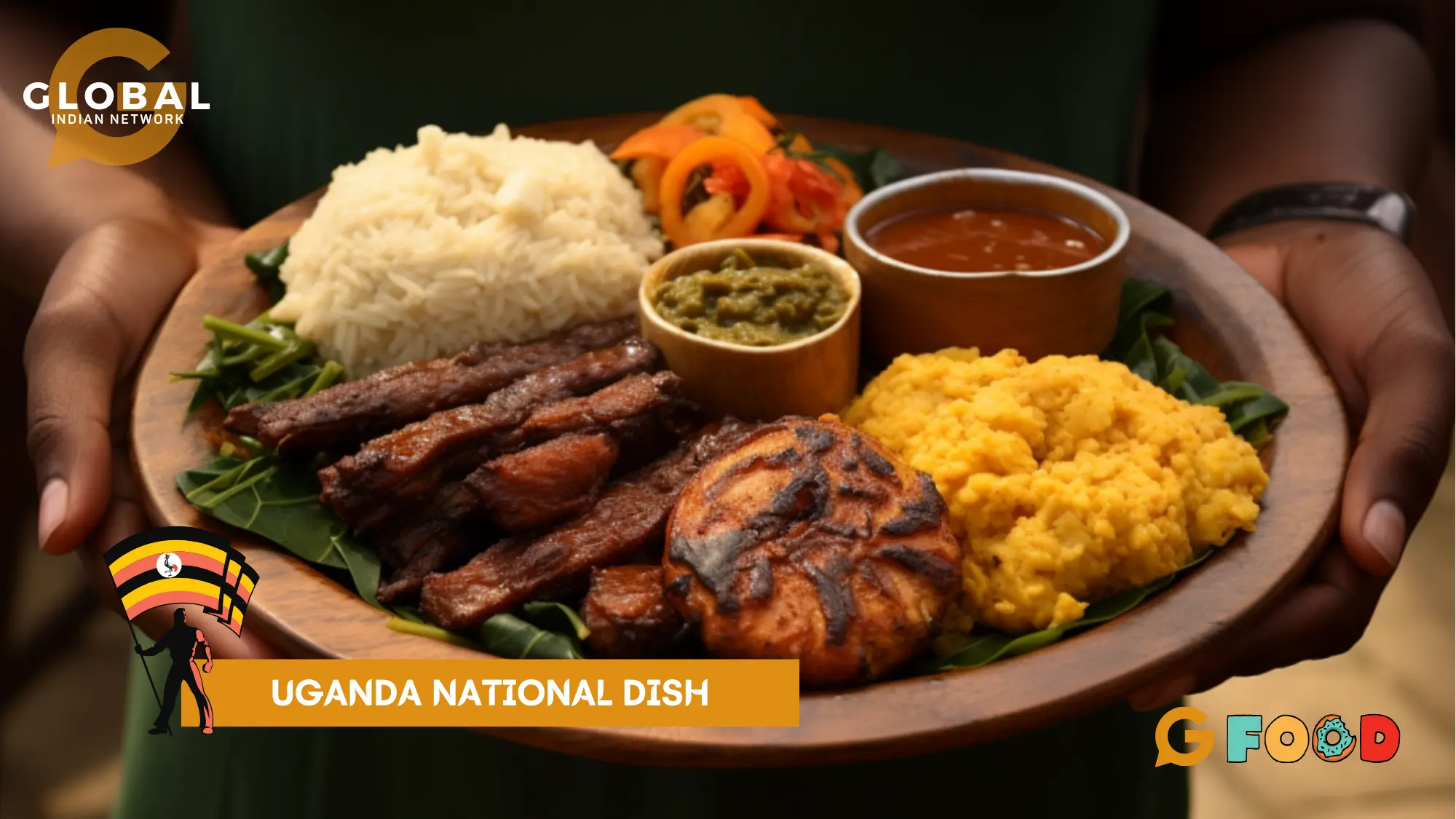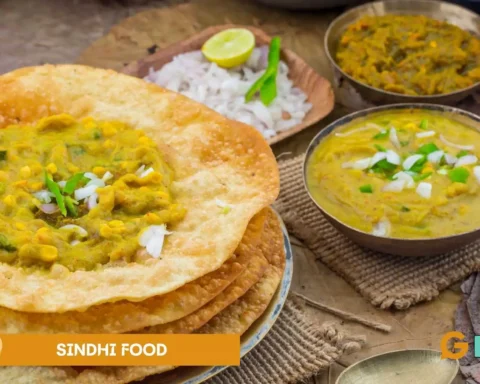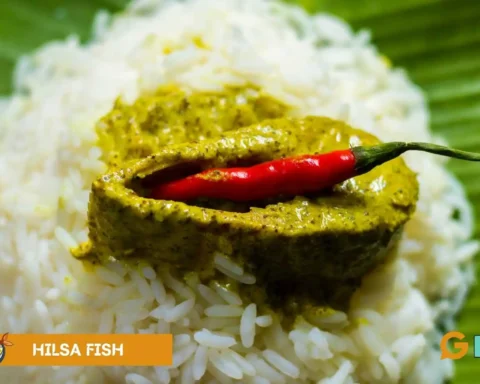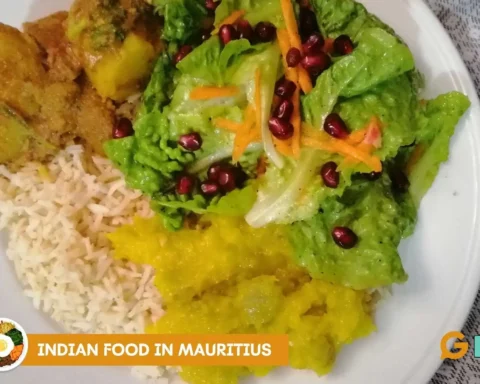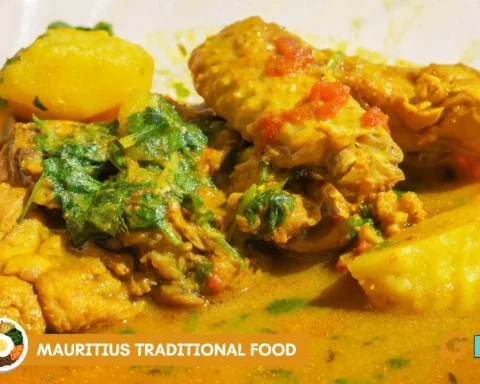Ugandan cuisine stands as a testament to the nation’s diverse cultural tapestry and its deep-rooted connection to the land. This blog delves into the captivating journey of the Uganda national dish, exploring its rich cultural significance and its cherished role in bringing communities together.
Among the myriad Ugandan dishes that grace its culinary landscape, one particular delight has risen to prominence as the embodiment of tradition and taste: Matoke. As the national dish of Uganda, Matoke encapsulates the essence of Ugandan cuisine not just once but twice over – in its preparation and significance. This beloved delicacy, crafted from the humble banana, is a true culinary masterpiece that echoes the heart and soul of Ugandan culture, reflecting the harmony between its people and the fertile earth that sustains them.
Join us on a journey into the world of Matoke, a dish that speaks to the core of Ugandan identity and showcases the richness of Ugandan dishes in a symphony of flavours and heritage.
Table of Contents
Historical and Cultural Context
In the realm of traditional foods, few hold a place as significant as Matoke within the historical and cultural tapestry of Bantu tribes. As a revered staple with deep-rooted ties to the heritage of these communities, Matoke’s journey extends beyond mere sustenance to embody the essence of tradition, unity, and culinary artistry. With origins tracing back through the annals of time, Matoke’s preparation and consumption have been interwoven into daily life, festivities, and communal gatherings.
Exploring the historical and cultural context of Matoke unveils a narrative that transcends its role as a meal, offering insights into the profound connections between people, the land, and the passage of time. This exploration delves into the cultural rituals, storytelling, and identity that Matoke encapsulates, illuminating its enduring relevance as a symbol of the past, a celebration of the present, and a bridge to the future.
Origins of Matoke Preparation
The origins of Matoke preparation can be traced back to the rich culinary heritage of Ugandan foods within Bantu tribes in Africa. Matoke also referred to as “matooke” or “ibitoke,” carries profound historical significance as a staple food deeply ingrained in Ugandan culture. The practice of cultivating and cooking Matoke likely emerged as an ingenious response to the Ugandan climate and geography.
Bantu communities skillfully harnessed the fertile, tropical environment to cultivate cooking banana plants, which form the foundation of Matoke dishes. Across generations, the intricate knowledge of cultivating and preparing Matoke has been handed down through oral traditions and familial teachings, creating a culinary legacy that transcends mere nourishment.
The art of peeling, steaming, or boiling the bananas to culinary perfection is a testament to these communities’ resourcefulness and wisdom. This culinary tradition connects with the natural abundance of Uganda’s land and serves as a crucial source of sustenance and cultural pride.
Role of Matoke in Traditional Celebrations
Matoke’s role as a popular dish in traditional celebrations is intricately embedded within the cultural tapestry of Bantu tribes. Recognized as a beloved element of Ugandan cuisine, Matoke takes centre stage during significant events, embodying a culinary emblem of tradition and collective identity. Whether marking weddings, harvest festivals, or important rites of passage, Matoke consistently occupies a prominent place in celebratory feasts.
Its presence encapsulates notions of abundance, unity, and familial ties. The meticulous preparation of Matoke dishes, often involving a collaborative effort of various family members across generations, highlights the shared commitment to the success of the occasion. As Matoke is distributed among participants, it fosters a profound sense of connection and shared heritage, reinforcing the cultural threads that bind the community together.
In these moments, Matoke transcends its role as a mere sustenance, offering physical nourishment and a spiritual link between history and the present, reaffirming the enduring customs that lend Bantu celebrations their distinctive character.
Cultural Variations in Matoke Preparation
Cultural variations in Matoke preparation encompass diverse techniques and ingredients, revealing the depth of culinary creativity within Bantu tribes. In some regions, Matoke is skillfully combined with sweet potatoes to create a harmonious blend of flavours and textures, resulting in a balanced and wholesome dish that reflects local tastes.
Additionally, using banana leaves as natural wrappers for cooking is common, infusing the Matoke with a delicate aroma and imparting a unique tenderness. While green bananas are a primary ingredient in many Matoke dishes, the degree of ripeness and the cooking methods can vary significantly from one community to another.
Some cultures prefer their Matoke to be firm and starchy, while others opt for a softer, sweeter result by allowing the bananas to ripen fully. These cultural adaptations in Matoke preparation showcase the versatility of this staple food and its ability to adapt to the distinct preferences and traditions of each Bantu tribe.
Nutritional Value of Matoke
The nutritional value of Matoke, a cherished traditional dish among Bantu tribes, offers a wholesome and balanced profile that sustains both body and tradition. Rich in essential nutrients, Matoke provides a hearty energy source, with its complex carbohydrates supporting sustained physical activity. Moreover, Matoke boasts an array of vitamins and minerals crucial for overall well-being, including vitamin C, vitamin B6, and potassium.
In comparison to Irish potatoes, another dietary staple, Matoke often exhibits a higher fibre content, contributing to digestive health and promoting satiety. This traditional dish reflects a community’s culinary heritage and nourishes its members with a nutrient-rich offering that resonates with cultural identity and vitality.
Culinary Techniques for Matoke Preparation
Embarking on a journey through the culinary techniques shaping Matoke’s preparation reveals a captivating fusion of tradition and innovation, emblematic of East Africa’s rich gastronomic heritage. Matoke, a revered staple within Bantu tribes, transcends its origins to embody a canvas for culinary craftsmanship. From the meticulous selection of green bananas to the intricate steps of peeling, cooking, and seasoning, each facet of Matoke’s creation bears cultural significance and regional nuances.
These culinary techniques evolve as time unfurls, harmonizing age-old practices with contemporary adaptations. Even introducing ingredients like baking powder imparts a modern twist while upholding tradition. This exploration into Matoke’s culinary techniques unravels the precise methods of crafting its unique flavours, textures, and cultural resonance. It illuminates the intricate dance between preserving heritage and embracing innovation, echoing the heart and soul of East Africa’s culinary narrative.
Traditional Cooking Methods for Matoke
Traditional cooking methods for Matoke come to life as they craft this beloved and timeless breakfast dish, celebrated among Bantu tribes. Rooted in the culinary customs of generations past, this approach revolves around the intricate preparation of green bananas. With practised hands, the bananas are peeled before being subjected to methods like steaming or boiling, culminating in a tender and flavour dish.
The selection of green bananas infuses the Matoke with its characteristic starchy texture, serving as the foundation for layering regional tastes and cultural heritage. This method, rooted in tradition, captures the bananas’ innate essence and encapsulates the expertise passed down through time. As a result, each serving of Matoke stands as a testament to the harmonious blend of technique, cultural legacy, and the delights of a popular breakfast food.
Modern Approaches to Matoke Cooking
Modern approaches to Matoke cooking have evolved with the changing culinary landscape, introducing innovative twists to this timeless dish while preserving its cultural essence. Alongside traditional pairings like millet bread and maize meal, contemporary interpretations often involve creatively fusing Matoke with diverse ingredients. For instance, Matoke can be served alongside rich and flavorful meat stews, enhancing the dish’s profile with the succulent textures of roasted meats.
Modern recipes also embrace complementary components such as sesame seeds and groundnut sauces, enriching the flavour palette while adding layers of nutritional value. Peanut sauce, or groundnut sauce, has become a popular accompaniment, lending the dish a creamy and nutty dimension. With its smoky allure, roasted meat harmonizes seamlessly with Matoke, infusing it with a modern flair. These contemporary approaches pay homage to tradition while welcoming new flavours and techniques, ensuring Matoke remains a beloved and dynamic culinary centrepiece.
Matoke in Bantu Daily Life and among Ugandan Dishes
At the crossroads of Bantu daily life, Matoke is an enduring sustenance and cultural identity emblem, interwoven seamlessly with the rhythms of existence. Rooted in traditions trailing generations, Matoke’s presence enriches the daily experiences of countless communities across African countries. Whether nestled in the heart of Western Uganda or gracing tables throughout the Bantu diaspora, Matoke transcends its role as a dish to become an integral thread in the fabric of existence.
Paired harmoniously with succulent goat meat, it mirrors the harmonious relationship between land and livestock, weaving together flavours and history. This exploration into Matoke’s role in Bantu daily life unravels the story of how a simple dish becomes a conduit for connection, nourishment, and the preservation of cultural heritage across diverse landscapes and communities.
Breakfast, Lunch, and Dinner: Matoke Throughout the Day
From dawn to dusk, Matoke assumes its rightful place in the tapestry of daily nourishment, traversing the spectrum of mealtimes. As a traditional breakfast dish, it graces morning tables with its comforting presence, infusing the start of the day with cultural resonance. Transitioning into lunch, Matoke transcends its morning identity to become a hearty midday meal, uniting flavours and memories in every bite.
But Matoke’s role continues. As the sun sets, it transforms into a popular street food, satisfying cravings with its delectable blend of tradition and innovation. This journey across the day illustrates Matoke’s remarkable versatility, bridging the gap between traditional and contemporary and embodying the spirit of sustenance that accompanies Bantu tribes throughout their daily rhythms.
Matoke’s Role in Family and Social Gatherings
Matoke holds a cherished role as a unifying force in the context of family and social gatherings, seamlessly integrating into the heart of these occasions. As one of the popular foods that define the culinary landscape of Bantu tribes, Matoke’s presence brings an air of comfort and familiarity to the table. In family settings, it symbolizes the warmth of home and the bonds that tie generations together, often prepared using age-old recipes passed down through time.
Moreover, Matoke’s presence in social gatherings bridges diverse palates and preferences, finding its place alongside other familiar cuisines. This traditional delicacy effortlessly transcends individual tastes, engaging participants in a collective appreciation of culture and culinary artistry. Whether at family reunions, celebrations, or community feasts, Matoke is a culinary ambassador that enriches the experience, creating lasting memories and connecting people through the universal language of shared meals.
Cultural Significance and Symbolism
Embedded within the culinary traditions of Bantu tribes, Matoke goes beyond its role as a dish to embody a deeper layer of cultural significance and symbolism. Just as its preparation involves the artful crafting of creamy sauces and the delicate use of passion fruits, Matoke becomes a canvas through which the narratives of communities unfold.
Much like the ripples on Lake Victoria, Matoke’s influence resonates across generations, reflecting the rich heritage and interwoven stories of those who cherish it. Delving into its cultural resonance unveils a tapestry of meanings, where the ingredients that adorn its preparation mirror the complex blend of heritage and history that shapes the essence of Matoke’s place in Bantu traditions.
Matoke in Folklore and Traditional Stories
Matoke, a cornerstone of Ugandan dishes and Ugandan foods, weaves its way into the rich tapestry of Ugandan folklore and traditional stories. Matoke often assumes a central role within these captivating narratives, embodying more than just a culinary creation. It becomes a vessel for cultural wisdom, representing unity, perseverance, and enduring generational ties.
Passed down through generations, these stories paint Matoke as a symbol of sustenance during times of hardship, a tangible connection to ancestral roots, and a testament to the resourcefulness of Ugandan traditions. As these tales unfold, Matoke transforms from a simple dish into a cultural emblem, reminding all who partake in it of the profound stories and values that shape Uganda’s identity.
Matoke: A Symbol of Unity and Community
Matoke is more than just a delicious food; it symbolises unity and community, binding individuals together under the canopy of shared flavours and experiences. Just as the rainy season nurtures the earth, Matoke’s presence nurtures the bonds that connect people. Like the vibrant green pepper that often accompanies it, Matoke adds a harmonious note to communal gatherings, infusing them with a spirit of togetherness.
The act of peeling, cooking, and sharing Matoke becomes a metaphor for collaboration and the idea that when efforts are combined, something remarkable emerges. As its aroma fills the air, it draws people from all corners, fostering conversations, laughter, and the creation of lasting memories. In this way, Matoke becomes a culinary emblem of unity, embodying the notion that the sum of its parts is more than just a dish – a celebration of the bonds that tie communities together.
Matoke’s Connection to Bantu Identity
Matoke’s profound connection to Bantu identity goes beyond its status as a seasonal delicacy, intertwining with the essence of cultural heritage and shared identity. Within the tapestry of Bantu traditions, Matoke’s preparation and consumption weave a narrative that resonates with the rhythms of ancestral customs and the heartbeat of collective belonging. Evolving from ordinary green bananas to a revered dish, Matoke mirrors the ingenuity and unity inherent in Bantu communities.
Like the intricate art of Matoke’s creation, preserving cultural roots and traditions demands similar care and intentionality. Matoke thus becomes more than a meal; it serves as a conduit that reaffirms Bantu identity, celebrating the distinctiveness of their heritage while interlinking them with a broader mosaic of African cultures. In this intricate tapestry, Matoke’s role transcends that of a simple delicacy; it is a poignant thread that intertwines Bantu identity with the pages of history, much like the unusual delicacies and alcoholic beverages that shape a nation’s food culture.
Culinary Innovation and Modernisation
Culinary innovation and modernisation have woven a dynamic tapestry around Matoke, fusing tradition with contemporary creativity. While Matoke’s roots trace back through generations, today’s culinary landscape introduces inventive twists that add new dimensions to this cherished dish. Pairing Matoke with unexpected delights like peanut brittle or g-nut sauce showcases an evolution that pays homage to tradition while inviting novel flavours to the table. Innovations such as incorporating tender chicken pieces or encasing Matoke within corn tortillas reimagine its role, rendering it both a familiar comfort and an exciting discovery. These adaptations breathe fresh life into a bread staple and reflect the seamless dance between time-honoured practices and modern experimentation. As culinary innovation shapes Matoke’s trajectory, it maintains its position as a culinary cornerstone, embodying the balance between honouring the past and embracing the tastes of the future.
Economic and Agricultural Aspects of Uganda Dish
The economic and agricultural aspects surrounding Matoke are multi-faceted, reflecting its significance in both sustenance and commerce. Cultivating ingredients like white maize and plantain leaves used in Matoke production supports local agriculture and contributes to economic stability through trade. Additionally, the cultivation of sweet plantains, a key ingredient in some Matoke dishes, serves as a source of income for farmers, promoting livelihoods within Bantu communities.
From an agricultural standpoint, cultivating these ingredients sustains traditional farming practices while adapting to modern demands. Plantain leaves, for example, play a dual role by serving as a cooking wrapper and as fodder for livestock, further enhancing agricultural productivity.
Economically, Matoke holds value as a source of protein and nutritional sustenance, contributing to food security within communities. Furthermore, its popularity transcends local boundaries, making it a staple in domestic kitchens and continental cuisines. This global recognition positions Matoke as a potential export, further bolstering local economies.
In essence, the economic and agricultural dimensions of Matoke underscore its role as a cultural and culinary cornerstone, intertwining tradition, livelihoods, and sustenance. As it continues to flourish locally and on a broader scale, Matoke is a testament to the intricate interplay between food, economics, and culture within Bantu societies.
Preservation of Matoke Tradition
The preservation of the Matoke tradition is a heartfelt endeavour encompassing various initiatives to safeguard its legacy for future generations. Among these efforts, documenting traditional Matoke recipes is pivotal in ensuring that time-honoured techniques and ingredients like millet flour, cassava flour, purpose flour, and corn flour are faithfully preserved. These recorded recipes serve as historical archives, capturing the essence of Matoke preparation as passed down through oral tradition.
Equally crucial is the passing down Matoke preparation techniques within families and communities. As older generations share their wisdom with the younger ones, the intricate art of Matoke creation is perpetuated. This knowledge transfer guarantees the dish’s authenticity and reinforces the strong ties between generations and the deep-rooted cultural significance it holds.
Matoke’s role in maintaining cultural heritage extends beyond its mere consumption. Its preparation, steeped in tradition and infused with ingredients like millet flour and cassava flour, embodies a connection to ancestral roots. As Matoke continues to be a centrepiece in communal gatherings and ceremonies, it becomes a tangible representation of shared history and identity.
The preservation of Matoke tradition is a collective effort that involves documenting recipes, transmitting knowledge, and recognizing the role of Matoke in cultural heritage. The interplay of ingredients like purpose flour and corn flour may evolve, but the spirit of Matoke remains a testament to the cherished traditions that have stood the test of time within Bantu communities.
Conclusion
The Uganda National dish, Matoke, stands as a remarkable culinary gem and one of the hearty dishes from the region, nurturing both body and soul through its cultural and nutritional significance. In this journey of discovery, we delved into the cooking process and intricate transformation of green bananas into robust creations that echo the resourcefulness and resilience of the Bantu communities. Illuminating a cultural tapestry, Matoke serves as a unifying emblem among Ugandan dishes, threading generations together and embodying folklore and tradition, while its nutritional prowess, bolstered by millet flour and cassava flour, further underscores its vital role in sustaining everyday life.
FAQs
What kind of meat do they eat in Uganda?
In Uganda, people commonly eat a variety of meats, including beef, goat meat, chicken, and fish. These meats are prepared in various dishes such as stews, grilled, fried, and roasted, reflecting the diverse culinary preferences of the country.
What is the famous dish of Uganda?
The famous dish of Uganda is “Matoke,” which consists of steamed or boiled green bananas, often served with a flavorful sauce. It holds cultural significance and is a staple in Ugandan cuisine.
Is Ugandan food spicy?
Ugandan food is not typically very spicy, emphasising a balanced blend of flavours rather than intense spiciness. While some dishes may include mild to moderate spices, Ugandan cuisine is known for its approachable and diverse taste profiles.
What is Kalo food in Uganda?
Kalo, or “posho,” is a Ugandan staple food made from millet or maize (corn) flour. It’s cooked with water to create a thick, starchy porridge and is commonly served as a side dish with various stews and sauces.




